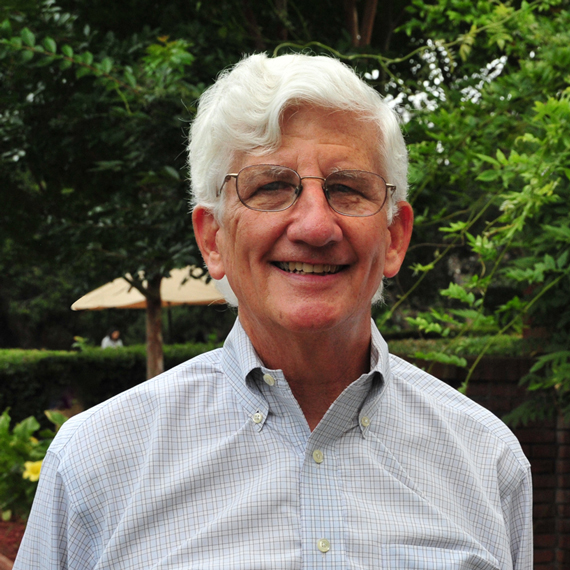|
SOHO President's Message
By David W. Goldberg
September/October 2023
 Photo by Sandé Lollis |
After leaving the City of San Diego Planning Commission meeting on August 4, 2023, when the commissioners voted to remove the controversial SB 10 from the city’s Housing Action Package 2.0, I was relieved, drained, and still a little apprehensive. The motion passed unanimously but included a provision allowing for the creation of a working group to revisit SB 10 at some future date. Had we really succeeded in killing SB 10? What does revisiting this egregious state law mean?
It took the better part of a day for my mind to clear. After thinking it through, I realized this vote represented a significant victory, one worth celebrating, especially after confirmation that the mayor’s office would not be pushing for SB 10 to be included in the housing package going forward. Without question, the strong public pushback had gotten through to the powers that be.
Still, the beast was only wounded and not slain. In all probability, some version of SB 10 will be resurrected, so we’d better be prepared to cut through any obfuscation and disinformation. The better people understand SB 10, the more they reject it.
First and foremost, as Planning Commission Chair William Hofman made clear, SB 10 is fatally flawed. Once enacted by a city, it becomes irrevocable and can never (that’s right, never) be changed, fixed, or replaced. No legislation is perfect and almost all laws need to be corrected or modified as conditions and underlying circumstances change. Future voters would effectively be disenfranchised, and the hands of future city councils tied. This is inherently undemocratic and should be rejected out of hand. Despite differing views on preservation, growth, and development, we should all be able to agree on this.
SB 10 was promoted as legislation that would drive down housing costs by increasing supply. That assertion, however, doesn’t stand up to scrutiny. It’s primarily about market rate housing and increased density. If SB 10 was truly about affordable housing, all SB 10 units would be required to be affordable, not just a few.
As SOHO Executive Director Bruce Coons stated at the Planning Commission meeting, adopting SB 10 “would be the most sweeping change in San Diego history,” breaking the social compact between individual homeowners and city government. Without protections including a requirement that SB 10 owners live onsite, single family residential real estate would be transformed into something it was never intended to be: a profitable asset for well-funded real estate investors.
SB 10 would allow up to fourteen residential units on a single lot, when coupled with other legislation, creating the potential for multiple rental income streams. By changing the underlying economics, single family home prices would be driven up, making it even more difficult for first-time buyers to enter the housing market. As flawed as zoning is, it has helped keep housing stock in the hands of individuals and provided a level of protection for historic resources.
One of the biggest complaints regarding the fast tracking of SB 10 was the overall lack of analysis and review. It was a case of “Just do something,” instead of “Do it right.” There was no environmental analysis even though demolished buildings are one of the largest waste streams going into fixed capacity landfills. There was no economic analysis of the impact increased density has on aging infrastructure, including costs associated with deferred maintenance and necessary upgrades. There was no transportation analysis of the impact of increased automobile trips on existing roads. This list goes on, but you get the picture.
Moreover, there was no discussion of the role that historic preservation plays in creating and maintaining affordable housing. In fact, what was at stake, was that any new historic district or designation after January 1, 2023, would not be protected from demolition for an SB10 project.
Probably the least discussed aspect of SB 10 would be its impact on middle class financial security and wellbeing. Home ownership has traditionally been the best way for middle class families to build wealth over time. SB 10, in contrast, would incentivize the construction of investor-owned rental units while making it more costly for individuals to purchase single family homes. Housing and economic policies shouldn’t make it more difficult—especially for young people starting out in life—to become part of the middle class. Any legislation that does this should be scrutinized with a very jaundiced eye.
There are no easy solutions to the housing affordability crisis. San Diego and coastal California have always been expensive places to live. Buying your first home has never been easy. Legislation that takes a meat cleaver to existing housing stock and historic resources is counterproductive. Historic preservation has a proven track record of providing home ownership opportunities to first time buyers, myself included. It’s not an impediment, it’s part of the solution.
Final thought: If SB 10 could be fast tracked, isn’t it time to get the processing of San Diego’s pending historic districts back on track? Some districts have been waiting decades to be processed by the city. Way past time to get off the dime! Instead of the house-by-house destruction SB 10 would inflict on neighborhoods, historic districts offer, among other benefits, the largely overlooked potential to provide starter homes and affordable housing while also preserving our city’s architectural heritage. The choice should be clear.
|
2025
2024
2023
2022
2021
2020
2019
2018
2017
2016
2015
|




